Varieties of begonias: types and best varieties
There are many different species in nature. begonias... They differ from each other in color, color of leaf plates, size and outer edging. When buying any specimen, you need to know how to grow and propagate it. Good care determines how the plant will feel and how long it will live.
Content:
- Decorative foliage begonia: features and varieties
- Tuberous begonia and its best varieties
- Description and varieties of ever-flowering begonia
- Varieties and characteristics of bush begonias
- How do plants reproduce?
- Begonia care tips
Decorative foliage begonia: features and varieties
The most popular indoor begonias are decorative foliage... Any florist can satisfy his taste and acquire an original color. This is due to the fact that there are a huge number of types of shrubs. They differ not only in the shape of the leaf, but also in its appearance. In addition, this type of begonias does not differ in specific requirements for care and maintenance.
Begonias got their name in honor of the Governor of Haiti - M. Begon. There are more than 100 varieties in nature. The homeland of begonias is considered to be the tropical and subtropical forests of South America, Africa and Southeast Asia. Shrubs feel best in rock crevices and under the shade of trees. The foliage of the shrub in most cases differs in the structure of the "elephant ear", but in nature you can also find a cut leaf plate and in the form of a spiral.
A distinctive feature of an ornamental-deciduous begonia is the color of its leaf plates.
It is presented in various tones - silver, yellow, green, red or white. The upper structure of the leaves in each species is different from the previous one. The sheet plates can have a simple glossy surface or with various veins of a specific color. Other shrubs have a matte upper structure with the addition of small villi. The peculiarity of decorative deciduous begonias is that they are remarkable only for their variegated foliage. In most cases, the inflorescences of shrubs are small and inconspicuous.
The following plant varieties are distinguished:
- Royal (Rex) - a herbaceous type of shrub, the stems of the plant are shortened, spread along the ground. The foliage is asymmetric, the shape of the leaf plate is round, with prominent pointed ends. The length of the sheet can be up to 30 cm, the width does not exceed 20 cm.
- Metal - under favorable growth conditions, it stretches up to 1-1.5 meters. It boasts a powerful stem with a reddish tint, covered with small villi on top. Deciduous plates are ovoid, the color of the foliage is olive green. On the surface of the deciduous plate, veins are distinguished, outlined in a red tone.
- Mason - its growth does not exceed 50 cm. The stems of the bush are small, thickened, are predominantly in a supine position, slightly thickened with a fleshy inside.The foliage is presented in the shape of a heart, on the surface of which brown patterns clearly show through against a green background.
- Tiger - differs in a large number of leaves located on long thin petioles. Plates of greenery are heart-shaped, ending towards the base, with pointed ends. The foliage has a rich green hue, with large brown spots on the surface.
- Imperial - does not grow more than 40 cm. Its foliage is reniform, while there are sharp ends at the ends. The surface has a dark green tone with a pattern in a creamy white shade.
There are other varieties of decorative deciduous representatives of begonias, but these varieties are the most popular in Russia.
Tuberous begonia and its best varieties
Tuberous begonia differs in the structure of rhizomes. They are presented in the form of large tubers. The ground part is distinguished by fleshy stems of a translucent tone, stretching up to 75-80 cm. The foliage is not distinguished by specifics and has a usual heart-shaped shape. The outer surface comes in a variety of textures: glossy or matt, as well as pubescent or lint-free, flat, flat or corrugated. The shade of the leaf plates varies across the entire spectrum of the green shade: from pale light green tones to deep dark green color.
When blooming, flowers can have both a simple flower structure and a double one.
In terms of external structure, the inflorescences are somewhat similar to carnation, peonies, roses or opened camellias. The flowering of shrubs begins with the first rays of the sun - in early May and lasts a very long time, until the onset of the first frosts - until the last decade of October.
Inflorescences on various species can be either small, small format, not exceeding 3 cm in diameter, and differ in the large structure of the flower, which can reach 20 cm in size. The buds can be single and collected in small panicles, during flowering, forming lush balls.
Gardeners in most cases prefer the following interesting varieties:
- Pikoti Harlequin - the height of the shrub does not exceed 25 cm. The bush has a semi-spreading structure. It boasts large inflorescences reaching up to 12-15 cm in diameter. Flowers are represented by a bright sunny yellow color, on the border of which a bright outline of a red border appears. Deciduous plates are of the usual shape, but with a jagged end.
- Bouton de Rose - shrub flowers, compact, have a double shape. The inflorescences in appearance resemble an opened rose and are at least 18 cm in diameter. The inflorescence petals have a delicate color - a light pink tone. The greenery of the bush is represented by a wavy, green tone.
- Crispa Marginata is a sprawling begonia with green leafy plates that does not grow more than 15 cm in height. There is a purple border around the edges of the leaves. Inflorescences are white or yellow, with a red border and curly leaves.
Tuberous begonia, in addition to the main varieties, distinguishes several types of plants: ampelous, herbaceous and shrub. The most popular varieties are separately included in the ampel type: Rocsana, Kristy, Girl, as well as Santa Cruz Sunset, Bossa Nova and Copacabana.
Description and varieties of ever-flowering begonia
Ever-flowering begonias are varieties of small shrubs, reaching an average of 15-20 cm. They are represented by complex hybrids. The types of these bushes differ among themselves not only in the colors of the inflorescences, but also in the shape of the leaf plates, in size and shade, as well as in the flowering period. More than 600 different species of flowering plants are known in nature, most of which were bred by breeders living in Denmark and France.
The ever-flowering varieties of begonias are divided into 2 main types: Semperflorence typical and Gracilis.
The first are endowed with powerful leaf plates, firmly sitting on a large stem. Their foliage is represented by a brown-burgundy shade, giving off a green tone. The second type is characterized by fragile cuttings, on which there are delicate leaves, pubescent on top.
But their main difference is large interesting flowers. Separately, all varieties differ in growth height. A group of tall shrubs reaching 40 cm, medium-sized begonias not exceeding 25 cm level and low-growing ones that do not grow up to 20 cm are distinguished.
Among all the variety, the following varieties of ever-flowering plants are distinguished:
- Alba is a tall, sprawling begonia. It is represented by white flowers, collected in large inflorescences.
- Othello - grows up to 25 cm, the shrub has a compact shape, the flowers are small, they are distinguished by a fiery scarlet color. They are distinguished by long-term constant flowering, in which a faded bud is immediately replaced by a new inflorescence.
- Kathe Teisher - Stretches to a height of 40 cm, its foliage acquires a red edging during the period of exuberant flowering. When blooming, the buds, 5 cm in size, are collected in bunches of 13 inflorescences, representing the original bunches.
- Karmen - pink flowers, not exceeding 3 cm in diameter, during flowering are collected in small bunches of 6 pieces. The foliage has a different brown glossy foliage.
- Bella - bush height - 19 cm. The leaflets have a red edging along the edge. During flowering, the buds gather in small bunches and form a bright bloom of pink or scarlet buds. They are characterized by excessively abundant flowering.
- Albert Martin is a compact bush up to 15 cm tall. Inflorescences are distinguished by a carmine-purple hue. The buds cover the entire surface of the flower and bloom very profusely throughout the summer. The foliage is edged with a scarlet outline along the edge of the leaf plate.
- Bicola is a tiny, undersized bush, 13 cm in size. Leaves of a green shade, delicate in structure, hide under inflorescences of a white shade, along the edge of the petal of which a pink strip is gently outlined. When the buds are blooming. They gather 4 flowers in one lush ball.
In addition to the main varieties, in specialized stores you can buy specially bred F1 hybrids that do not differ in large structure. They grow on average up to 25-30 cm. Such varieties bloom quickly and fruitfully in conditions of high temperature and bright sun.
Varieties and characteristics of bush begonias
Shrub begonias are represented by a peculiar structure - they have a geniculate stem and are highly branched. Outwardly, the stem is very similar to the structure of a bamboo stem. The shrub has a specific structure - many side stems emerge from its base.
Foliage does not have a single standard outline, its shape and appearance are of great variety. The flowering of the inflorescences is represented by a very beautiful appearance, consisting of graceful open buds. Root system does not divide, grows densely in a large lump. The rhizomes of the plant are fleshy, large, do not go deep into the ground, but they are not located on the surface either. The shrub is well attached to the surface, so you cannot pull it out of its home with a light breeze.
The main distinguishing feature of bush begonia is that its flowering does not end with the onset of cold weather, but continues for a long period.
The varietal affiliation of the species is divided into perennial species and annuals. The begonias of these varieties are high. Under favorable growing conditions, they can reach up to 2 meters or more.
Bush begonia is represented by the following varieties:
- Coral - the stems of the bush can reach from 0.5 to 1 m. They are perfectly straight and bare. On the entire surface of the stem, you cannot find a uniform color, it smoothly flows from one tone to another, gradually changing color. The outer side of the leaf is all covered with small specks of a silvery hue.The lower side of the plate is dark in color with a red tint. The inflorescences of the plant are small, small in size, but when collected in inflorescences they form a lush brush.
- Fuchsian - the stems are tall, like in the previous species, but they branch strongly. Under favorable living conditions, they reach up to 1 m in height. Foliage is presented in an oval shape. The appearance of a sheet plate of a standard color is green, but it glitters interestingly in the sun, standing out for its glossy surface. The inflorescences are distinguished by the eccentricity of the color scheme - the entire palette from red to pink can be present on one bush. The disadvantage of the plant is the flowering itself - the inflorescences do not gather in bunches, but bloom scatteredly, in single buds and sag strongly.
Bush begonia does not differ in a huge number of varieties. But even those that represent it have an original appearance and specific features.
How do plants reproduce?
Any kind of begonias can be grown both indoors and outdoors. To propagate your favorite varieties of shrubs, two methods are used:
- Seeds - to obtain the required copy, you should purchase seeds in specialized stores. You should not buy seedlings from your hands. When sowing, a completely different variety may emerge, instead of the promised type. It is necessary to plant seed several months before flowering. It is recommended to start preparatory work for planting in early February. In most cases, the seeds are placed in special capsules, pre-saturated with all the nutrients that have a beneficial effect on the rapid germination of a tender sprout and the formation of the root system. For planting, purchased soil is used or prepared independently from river sand, dry crushed peat and leafy soil substrate. Seeds are laid out in a trickle of no more than 0.5 cm. If the seedlings are placed deeper, they cannot always sprout. Therefore, it is worth not planting deeply. After planting, you should irrigate the soil, cover the flowerpot on top with glass or plastic wrap. For rapid germination, it is required to put it in a bright room with a temperature not lower than +22 .. + 25 C. The first shoots, under favorable conditions, germinate within 7 days after planting.
- Tubers are the most common method for obtaining young sprout. But before dividing the plant, it should be precisely determined that there is a bud on the separated tuber for further growth. If the tuber was purchased. It must be immediately placed in a well-damp cloth. It is necessary for the tuber to sprout the necessary sprouts faster. In no case should you overdry the plant. When the first sprouts appear from the tuber, it is necessary to immediately place the rhizomes in the prepared nutrient soil, while it is necessary to ensure that the upper part protrudes 1/3 from the ground. In the summer, plants can be planted in open ground, but when cold evenings come, experienced gardeners transplant begonias back into flowerpots and bring them into indoor conditions or a greenhouse.
Begonia care tips
So that any kind begonias it bloomed and developed well, it is necessary to provide appropriate care for the bush. The following rules should be followed:
- Temperature regime - it is necessary to adhere to +25 C in the summer heat, otherwise you will have to water more often. And in the winter months, you should not lower the degrees in the room below +18 C.
- Lighting - begonia loves sunlight, but prolonged exposure to direct rays contributes to the appearance of burns on the leaves. Therefore, it is worth providing begonias with diffused lighting.
- Watering - Frequent but moderate is necessary. When irrigating the plant, it should be monitored so that water does not get on the foliage, this also leads to burns and the development of diseases.
- Place of the room - for good and fast growth, you should not move the flowerpot often. Begonia does not like frequent rearrangements and new places. In addition, you should not touch the delicate leaves unnecessarily, they form prints that negatively affect the state of the plant.
- Begonia is usually very easy to care for. Dried foliage should be removed periodically and the amount of water applied should be observed. It is imperative to make small top dressing during the growing season. This will have a beneficial effect on the appearance of the flower.
Thus, the varieties of begonias differ in their diversity and appearance. When buying, you should pay attention to the shape of the flower and its care features. For a new shrub, it is better to use the tuber separation method. When planting seeds, maternal qualities are not always preserved.
More information can be found in the video:



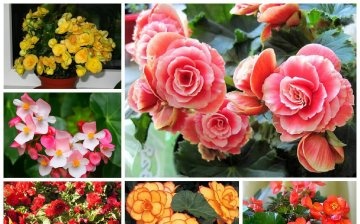
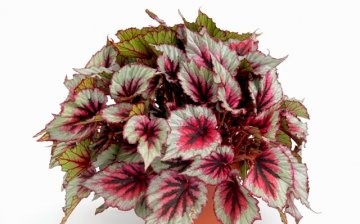
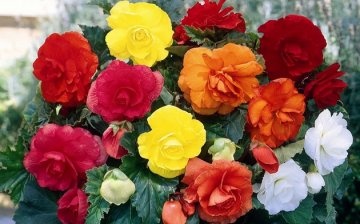
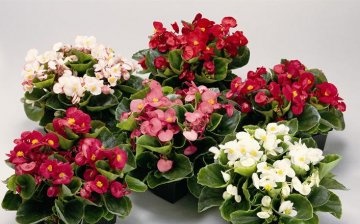


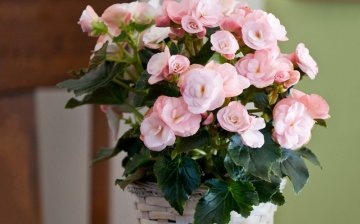







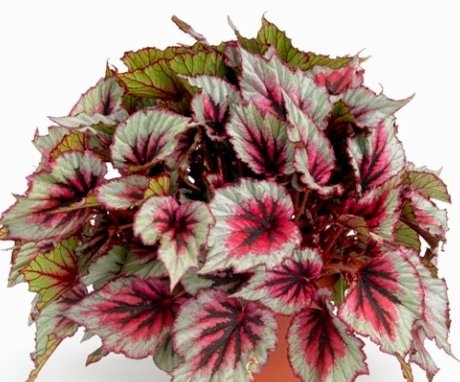
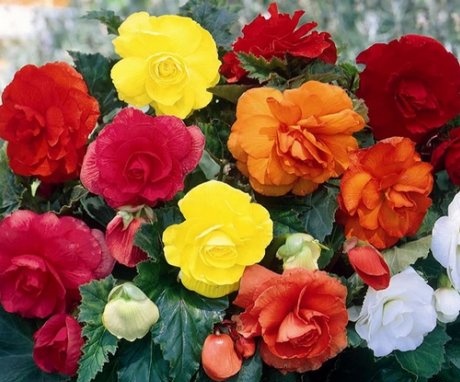
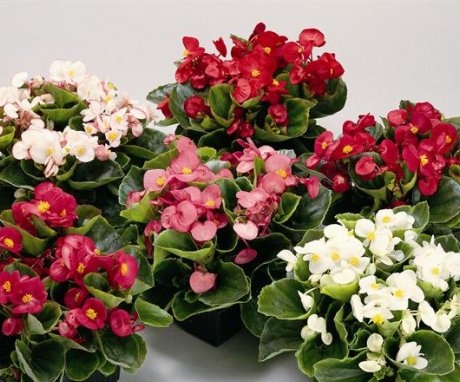
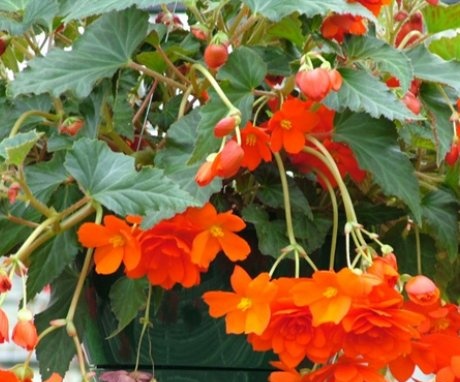

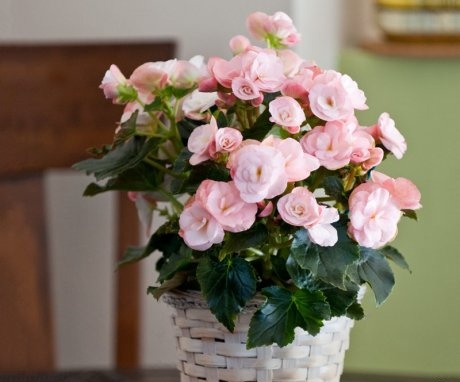
I plant begonias in pots for landscaping a summer terrace. Planting seedlings - in May. Blooms right up to autumn. From care - drainage is required to the bottom of the pot, watering every day in the baking sun and cleaning of faded buds.